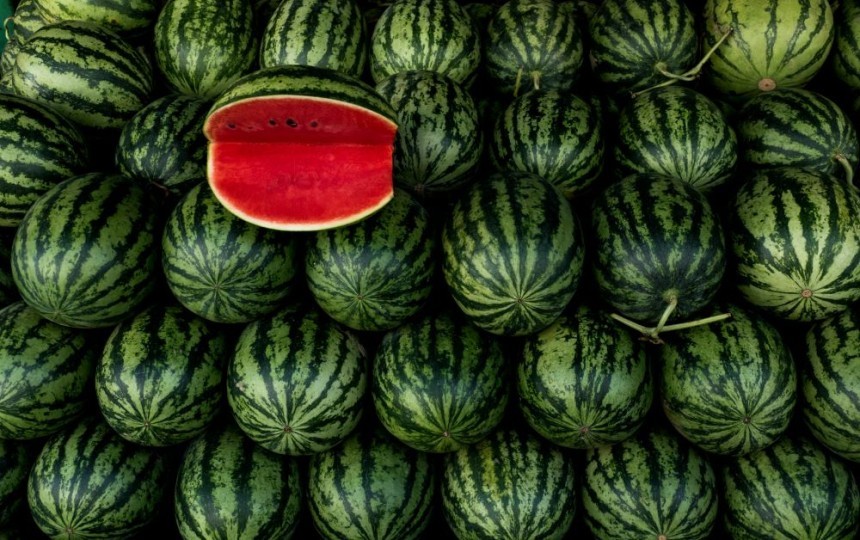
How to Grow Organic Watermelon: A Guide for Beginners
Watermelon is a refreshing and delicious summer fruit; growing it organically ensures you enjoy its pure, chemical-free taste. Cultivating watermelons may seem daunting for beginners, but with the proper knowledge and techniques, anyone can grow this juicy fruit in their backyard. This guide will walk you through the essential steps of growing organic watermelon, from seed selection to harvesting, helping you enjoy a fruitful and satisfying gardening experience.
Why Choose Organic Watermelon?
Organic gardening focuses on growing produce without synthetic pesticides, fertilizers, or genetically modified organisms (GMOs). This approach produces healthier, tastier fruits, supports a sustainable environment, and promotes soil health.
Benefits of Growing Organic Watermelon
- Chemical-Free Produce: By avoiding synthetic chemicals, organic watermelons are safer for consumption and better for the environment.
- Better Flavor: Many gardeners find that organic watermelons have a richer, more natural taste than conventionally grown varieties.
- Soil Health: Organic practices help maintain the soil’s fertility, ensuring your garden remains productive for years.
If you’re ready to start growing organic watermelons, the first step is to shop for watermelon seeds. Choosing certified organic seeds from a reputable supplier ensures that your plants start with the best possible quality, setting the stage for a successful harvest.
Selecting the Right Watermelon Variety
Choosing a suitable watermelon variety is crucial, especially for beginners. Some varieties are better suited for organic gardening because of their natural resistance to diseases and adaptability to different climates.
Recommended Organic Watermelon Varieties for Beginners
- Sugar Baby: This compact variety is perfect for small spaces or container gardening. It matures quickly and produces sweet, small fruits weighing about 6-10 pounds.
- Crimson Sweet: Known for its large size and vibrant flavor, Crimson Sweet is a popular choice for home gardens. Its natural resistance to common diseases makes it an excellent option for beginners.
- Charleston Gray: This variety is ideal for warm climates and is highly resistant to fusarium wilt and anthracnose, two common watermelon diseases.
Choosing the suitable variety ensures your watermelons thrive in your specific environment and provide a bountiful harvest.
Preparing the Soil for Organic Watermelons
Watermelons thrive in well-drained, sandy loam soil with a pH between 6.0 and 6.8. Proper soil preparation is the foundation of a successful watermelon crop, mainly when grown organically.
Steps for Organic Soil Preparation
- Add Organic Matter: Incorporate organic compost or well-rotted manure into the soil to provide essential nutrients such as nitrogen, potassium, and phosphorus. These nutrients are vital for healthy plant growth and fruit development.
- Test and Adjust Soil pH: Conduct a soil test to check and adjust the pH level if necessary. Lime can raise the pH level, while sulfur can lower it, ensuring the soil is optimal for watermelon growth.
- Learn more about How to Test Soil pH With and Without a Kit
- Create Raised Beds or Mounds: Form raised beds or mounds to improve drainage and warm the soil faster, which is crucial for germination. These beds should be about 12 inches high and 4-6 feet apart to allow the vines to spread.
By enriching the soil and creating the right structure, you create a thriving environment for your watermelon plants and ensure they receive the nutrients they need organically.
Planting Organic Watermelon Seeds
Once the soil is prepared, planting your seeds at the right time and using the correct techniques are key to successful watermelon growth. Watermelon seeds should be planted after the last frost when soil temperatures reach at least 70°F (21°C).
How to Plant Organic Watermelon Seeds
- Direct Sowing: Plant seeds directly in the mounds or raised beds, placing them about 1 inch deep. Put 2-3 seeds per mound to increase the chances of at least one strong plant emerging.
- Water Immediately: After planting, water the seeds gently to settle the soil. Keep the soil moist but only waterlogged once germination occurs, which usually takes 5-10 days.
- Thin the Seedlings: Once seedlings are about 3 inches tall, thin them to leave only the strongest one per mound. This ensures the plant has enough space and nutrients to thrive.
Proper planting techniques ensure that your watermelon seeds have the best chance of germinating and developing into vigorous, productive plants.
Watering and Mulching for Organic Growth
Watering is essential for watermelon plants, especially during flowering and fruiting. However, overwatering can lead to diseases, so finding the right balance is important.
Tips for Watering Organic Watermelons
- Deep Watering: Water deeply once or twice weekly, ensuring moisture reaches the roots. This encourages deep-root development and supports the plant during hot weather.
- Mulch for Moisture Retention: Apply organic mulch such as straw, wood chips, or grass clippings around the plants. Mulch helps retain soil moisture, suppresses weeds, and keeps the soil temperature consistent.
- Drip Irrigation: Use a drip irrigation system or water directly at the base of the plants. This minimizes water contact with the leaves, reducing the risk of fungal diseases.
Fertilizing Organically
Organic watermelons benefit from natural fertilizers that support their growth without compromising the integrity of the soil.
- Compost Tea: Apply compost tea every two weeks to enrich the soil with essential nutrients and promote strong vine growth.
- Fish Emulsion: Fish emulsion is another excellent organic fertilizer, beneficial during the flowering and fruiting stages.
- Bone Meal: To boost fruit development, apply bone meal when the plants start flowering. Bone meal is rich in phosphorus, which supports fruit formation.
“Organic gardening is a partnership with nature, where every seed planted becomes a promise of growth and sustainability.”
Managing Pests and Diseases Organically
Growing watermelons organically means taking proactive steps to manage pests and diseases without using synthetic chemicals. Using natural methods, you can protect your plants and maintain a balanced ecosystem in your garden.
Organic Pest Control Techniques
- Companion Planting: Plant herbs like basil or flowers like marigolds near your watermelons. These companion plants help repel common pests such as aphids, beetles, and squash bugs.
- Neem Oil: Neem oil is an effective organic pesticide that helps manage pests like spider mites and aphids without harming beneficial insects.
- Physical Barriers: Use row covers to protect young plants from pests. These covers also create a favorable microclimate that speeds up seedling growth.
Disease Prevention Tips
- Crop Rotation: Rotate watermelon crops each season to prevent soil-borne diseases like fusarium wilt. Avoid planting watermelons in the same area for consecutive years.
- Proper Spacing: Ensure plants are spaced adequately to promote air circulation, reducing the risk of fungal infections.
- Baking Soda Solution: Spray a baking soda solution on affected leaves to manage fungal diseases. This natural fungicide is effective for powdery mildew and safe for organic gardens.
By implementing these organic methods, you maintain a healthy, chemical-free garden environment that supports the growth of your watermelons.
Harvesting Organic Watermelons
Knowing when and how to harvest watermelons is crucial for enjoying their sweet, juicy flavor. Most watermelon varieties mature in 70-90 days, but the exact timing depends on the variety and growing conditions.
Signs of Ripeness
- Tendril Test: The tendril nearest to the fruit should turn brown and dry when the watermelon is ripe.
- Sound Test: Tap the watermelon; a deep, hollow sound typically indicates ripeness.
- Color Change: Check the underside of the watermelon. If the spot where it rests on the ground changes from white to creamy yellow, it’s ready to harvest.
Use a sharp knife to cut the watermelon from the vine, leaving a small portion of the stem attached to prevent rot and keep the fruit fresh.
Continuing Your Organic Gardening Journey
Growing organic watermelons is an enriching experience that connects you with nature and sustainable practices. By following these steps, from soil preparation to harvesting, you can cultivate a thriving watermelon patch in your own garden. The result is not just a delicious and chemical-free fruit but a deeper appreciation for the process of organic gardening.
Instead of viewing organic gardening as a challenge, embrace it as an opportunity to experiment, learn, and grow. With each season, you refine your methods, explore new varieties, and deepen your knowledge, creating a garden that’s not only productive but also a source of joy and connection to the natural world.
This Article is written to accelerate businesses. JOIN The Community Now! Fuel your business success with Grow Media Digital! 🚀 Tailoring expert strategies, from SEO to social media, ensure a perfect fit for your needs. With an innovative approach, they stay ahead of trends, guaranteeing measurable growth. Visit growmedia.digital to bring your business to new heights.





